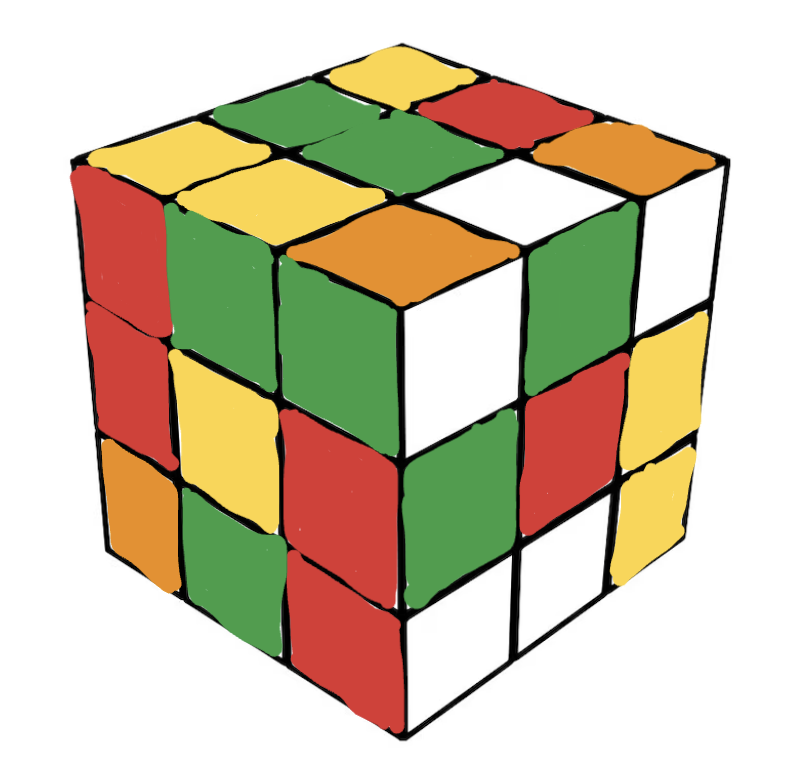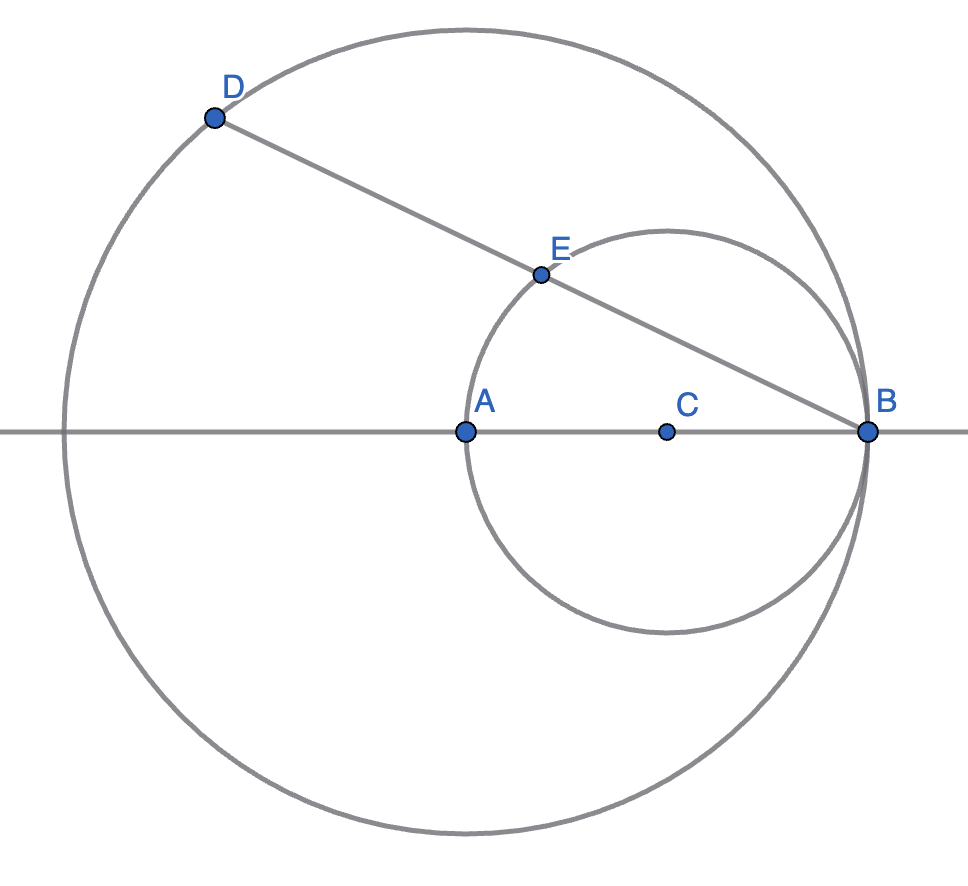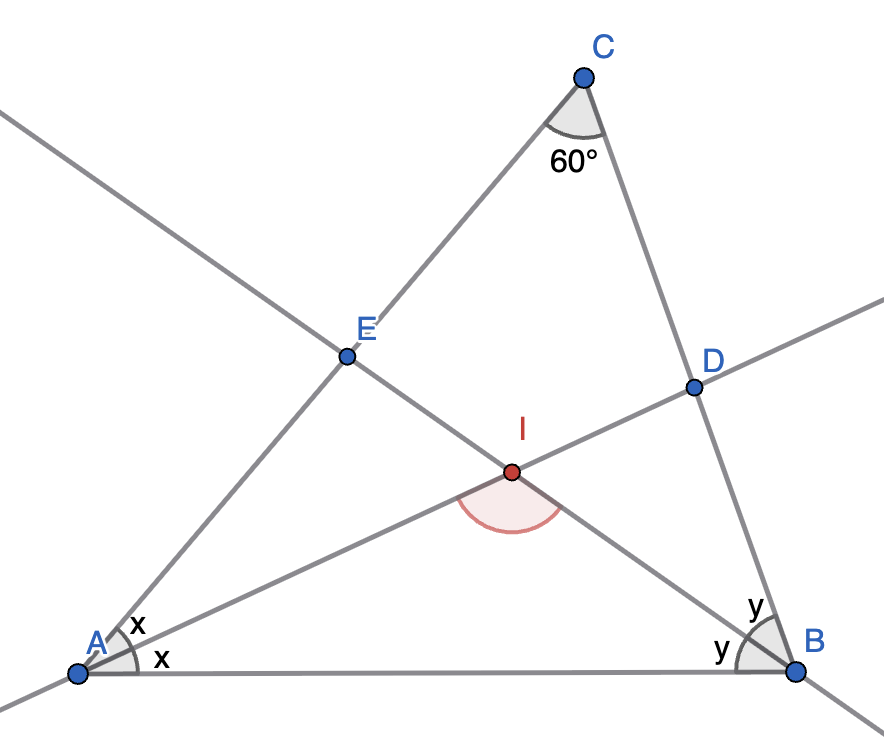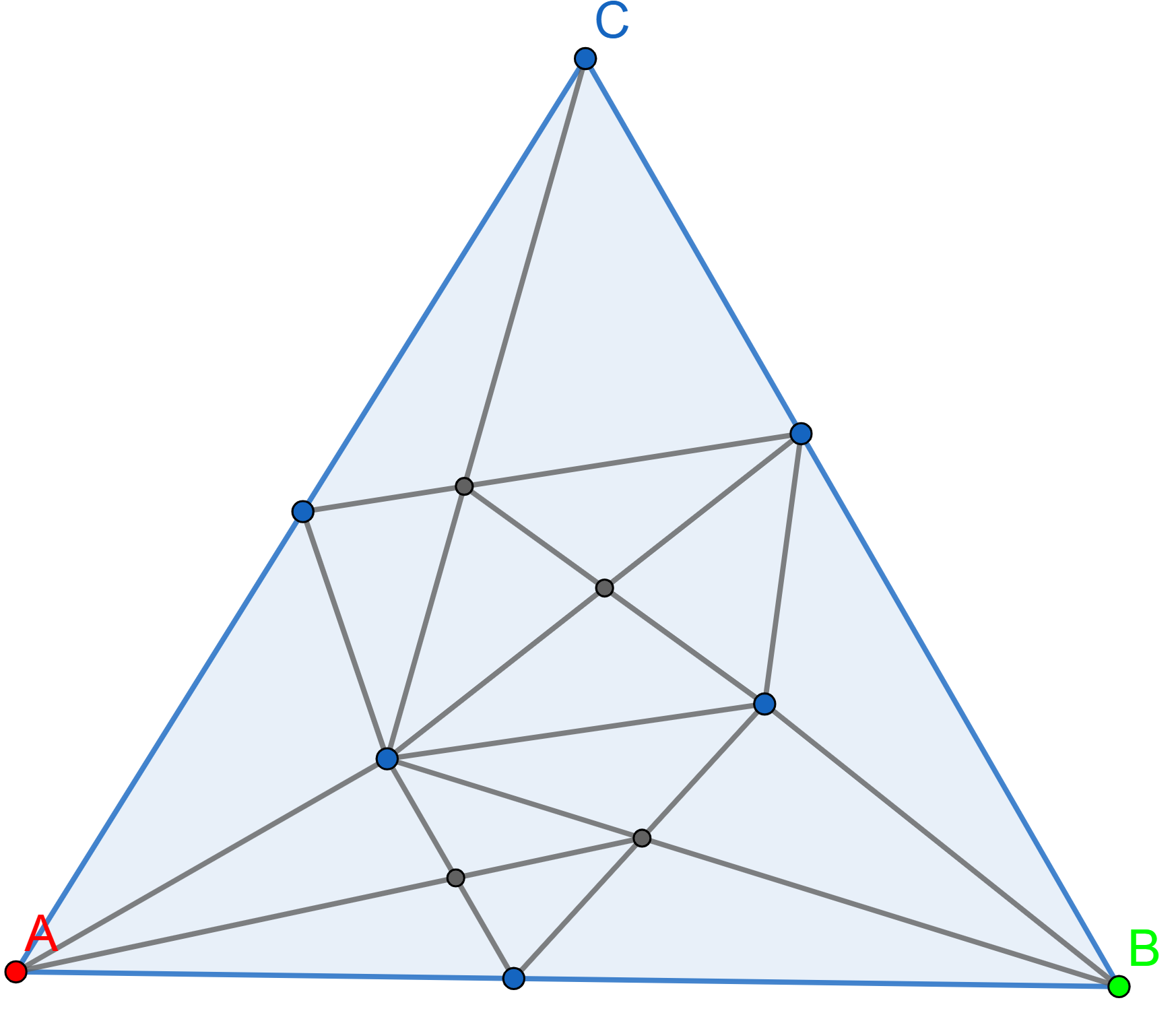Problems
Explain why you can’t rotate the sides on a normal Rubik’s cube to get to the following picture (with no removing stickers, painting, or other cheating allowed).

A circle with centre \(A\) has the point \(B\) on its circumference. A smaller circle is drawn inside this with \(AB\) as a diameter and \(C\) as its centre. A point \(D\) (which is not \(B\)) is chosen on the circumference of the bigger circle, and the line \(BD\) is drawn. \(E\) is the point where the line \(BD\) intersects the smaller circle.
Show that \(|BE|=|DE|\).

Are there any two-digit numbers which are the product of their digits?
The sum of Matt’s and Parker’s ages is \(63\) years. Matt is twice as old as Parker was when Matt was as old as Parker is now. How old are they? (Show that there’s no other ages that they could have)
How many \(10\)-digit numbers are there such that the sum of their digits is \(3\)?
In the triangle \(\triangle ABC\), the angle \(\angle ACB=60^{\circ}\), marked at the top. The angle bisectors \(AD\) and \(BE\) intersect at the point \(I\).
Find the angle \(\angle AIB\), marked in red.

Draw Sperner’s coloring for the following triangulation. Try to avoid rainbow triangles at all costs.

Suppose that \((x_1,y_1),(x_2,y_2)\) are solutions to Pell’s equation \(x^2-dy^2 = 1\). Show that \((x_1x_2+dy_1y_2,x_1y_2+x_2y_2)\) also satisfies the same equation.
Suppose that \(x+y\sqrt{d}>1\) gives a solution to Pell’s equation. Show that \(x\geq 2\) and \(y\geq 1\). Can the bounds be achieved?
So far we have discussed polynomials in one variable, i.e: with only an \(x\) as our variable. We can however, include as many as we want. For example, we can talk of a polynomial such as \[P(x,y)=x^2-y^2,\] where both \(x\) and \(y\) are variables. This is an example of an antisymmetric polynomial, which means that \(P(x,y)=-P(y,x)\) (i.e: switching \(x\) for \(y\) gives the original polynomial with a minus sign). Conversely, a polynomial \(Q(x,y)\) such that \(Q(x,y)=Q(y,x)\) is called symmetric. Show that every antisymmetric polynomial \(P(x,y)\) can be factored as \[P(x,y)=(x-y)Q(x,y),\] where \(Q(x,y)\) is a symmetric polynomial.